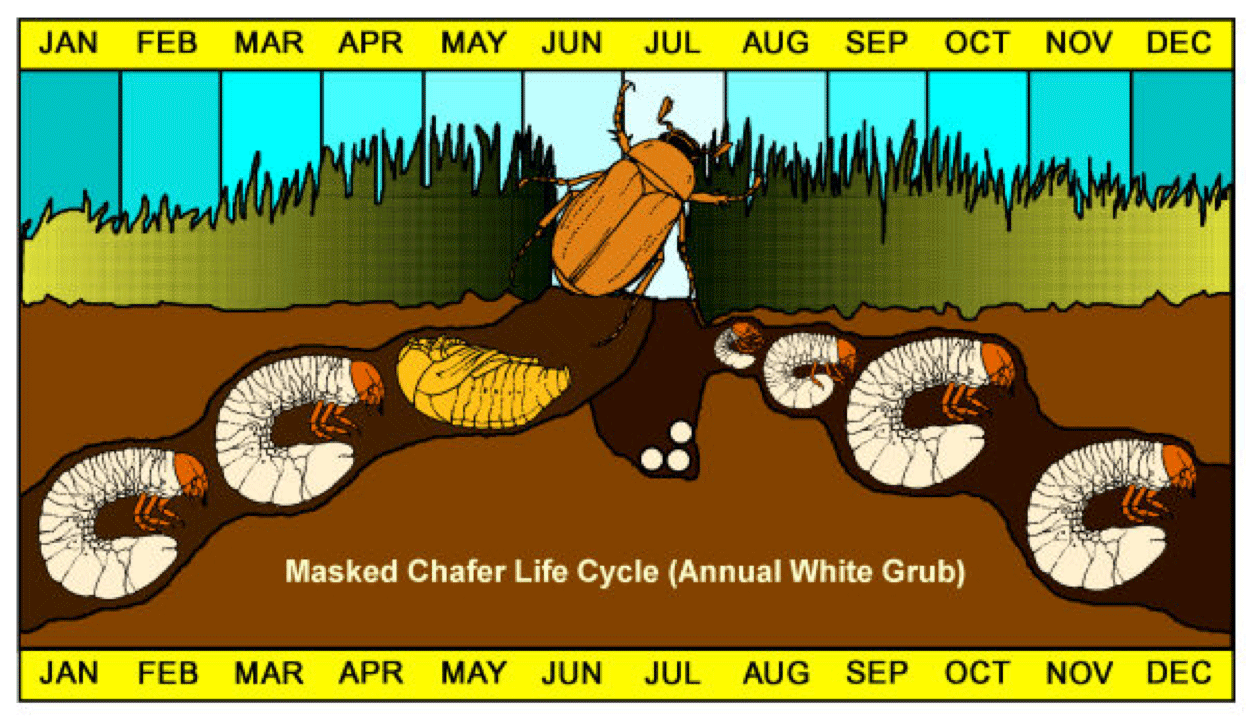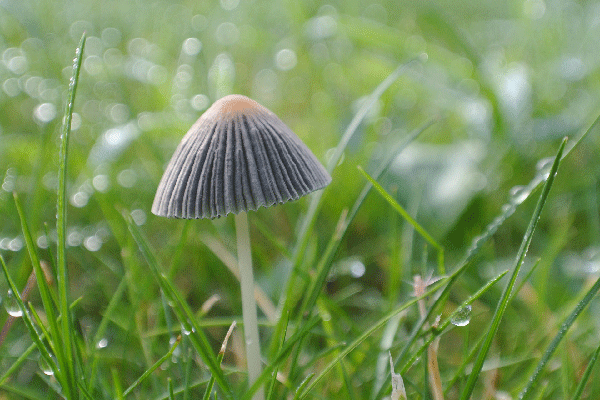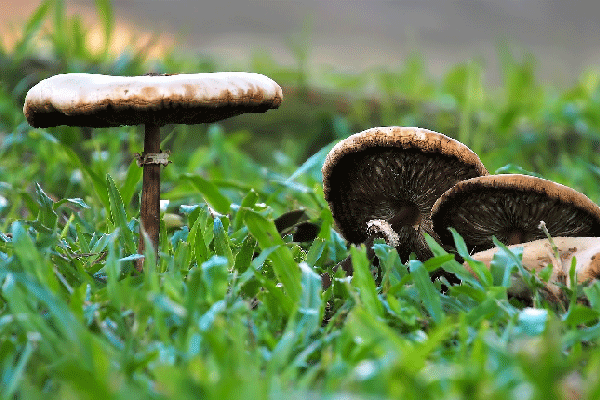Birds feeding in lawns can trigger questions about the need to apply an insecticide to control whatever the birds are eating. I am also asked if fungicides need be applied when mushrooms appear in a lawn.
What Are Birds Feeding On? Is It Worth Control?
While bird feeding could be an indication of a turf pest, it is not a reason to apply an insecticide. The presence of a damaging insect population must first be confirmed.
There are a number of critters birds could be eating. What they are eating may or may not be a turf pest. It could be beneficial earthworms or ground beetles.
 The overwintering stage of white grubs found in lawns and gardens in spring to very little feeding and are not considered damaging. Wait to control the next generation.
The overwintering stage of white grubs found in lawns and gardens in spring to very little feeding and are not considered damaging. Wait to control the next generation.What About White Grubs?
While birds could be eating grubs, at this time of year overwintering annual white grub larvae will not damage lawns and do not need to be controlled.
Some homeowners believe killing overwintering larvae will prevent the next generation from causing damage, but this is not true. Since adult beetles (masked chafers) are flyers, new beetles can still fly in to lay eggs. And rarely do insecticides control 100 percent of a population.
To make responsible decisions related to insecticides, the information needed is:
- what insects cause damage,
- the time of year a damaging stage may be present,
- how many of the insects need be present for damage to occur, and
- the life stage at which insects are susceptible to a control method.
With annual white grubs, overwintering larvae are not damaging. They are fully grown and do very little feeding. And at this life stage, insecticides are not very effective in killing them. They soon will pupate which is another stage insecticides are not effective against.
It is the next generation of annual white grubs that could cause damage in late August or September if grub numbers are high enough. This stage eats roots voraciously as they grow from an immature to a mature larvae. (I call it the teenage stage).
Damaging or "Threshold" Level
The population of white grubs must also be high enough for feeding to cause lawn damage. Typically, 5 to 8 white grubs per square foot must be present for an insecticide application to be justified.
Do not apply insecticides to lawns, or other landscape plants, without first confirming the presence of a damaging pest population. With grubs, a preventive insecticide such as Imidacloprid (Merit) or halofenozide (Mach 2), only need to be applied if the lawn had a damaging population the previous year.
Even then, or if a damaging population is found in August or early September, it is okay to choose not to apply an insecticide. Lawn damage often repairs itself, especially Kentucky bluegrass. And dead patches can easily and inexpensively be repaired by seeding.
Insecticides need to be used responsibly to reduce killing beneficial insects, like pollinators; and to reduce the risk of pests developing resistance to an overused insecticide.

Mushrooms
The same is true for fungicides. Mushrooms growing in a lawn are not a sign of a harmful fungus. And the application of a fungicide will not control or prevent mushrooms.
The presence of mushrooms indicates there is a dead tree root, or other organic matter, that beneficial fungi are decomposing. Once the organic matter has decomposed, mushrooms will stop appearing during cool, wet weather.

